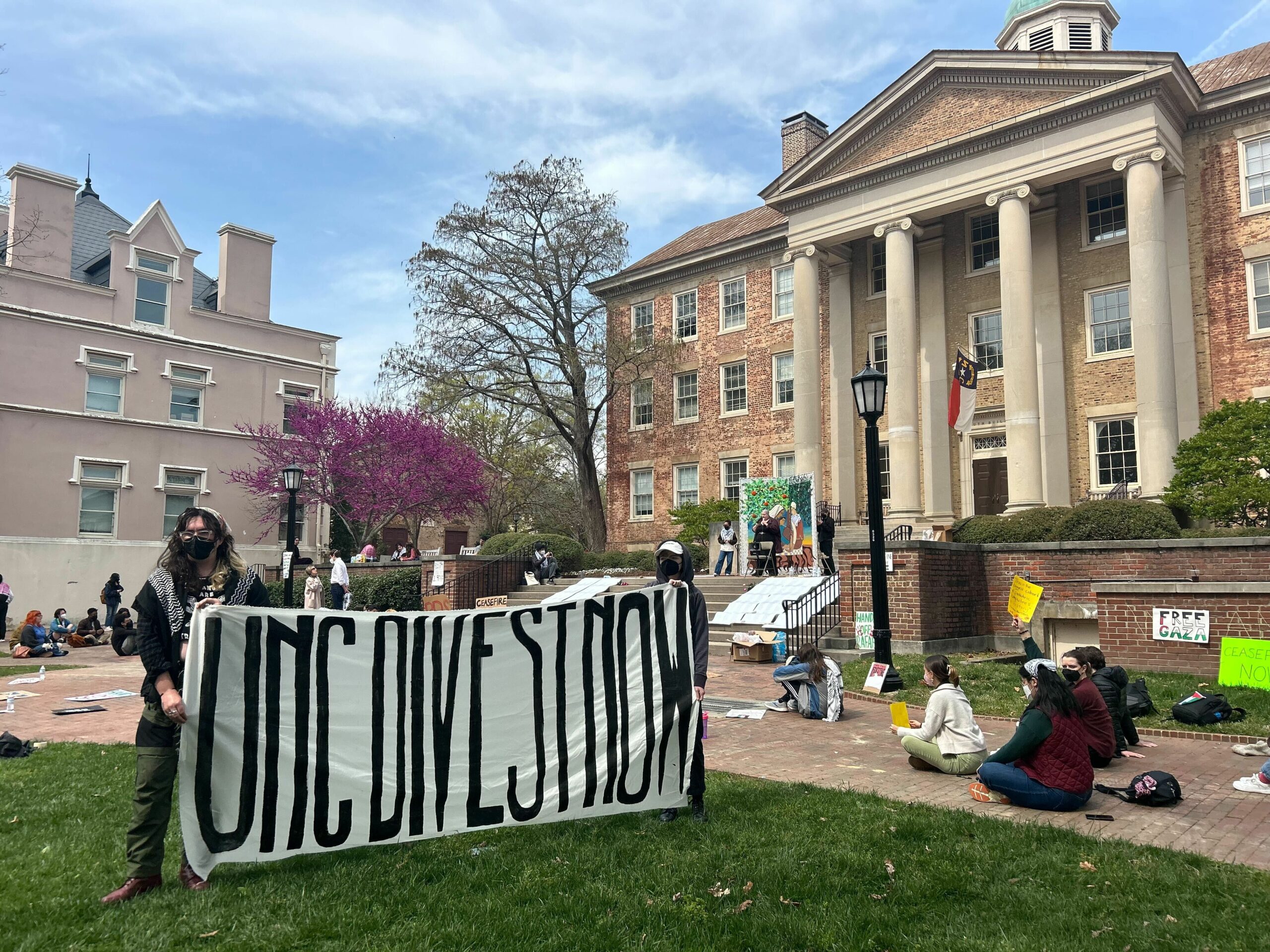A lot of work has been put into the entryway at Carolina Hall on the UNC campus.
It was last May that the university’s Board of Trustees voted to change the name of the building from Saunders Hall after protests by student groups over the building’s namesake. William L. Saunders was a Secretary of State in North Carolina, where he is credited with the accumulation of public records following the Civil War. But Saunders was also credited as the leader of the Ku Klux Klan in North Carolina when the Board of Trustees chose to name the building after him in 1920.
The current board’s University Affairs Committee toured the new exhibit at last week’s meeting.
“Every image is an image that was selected to tell a story in addition to the stories that are being told,” said Chancellor Carol Folt when addressing the group. “So, in many ways this is a true demonstration of the important power of history and storytelling. And I think that’s something that we all feel.”
Board trustee Chuck Duckett acknowledged that this was a straight-forward depiction of a past that can be difficult to face.
“This is a tough history for people to read,” Duckett said. “But it’s the true history; it’s not an opinion. And if we do this and we continue on the three resolutions that we had as a board – and we are going to do that – then we’re doing what we said we would do. And the whole thing – it’s worth it anyway – but it’s going to be worth it even more in the future because this is just one component of it.”
Professor Jim Leloudis was one of the members of the task fore that worked on the project. He said it was important to focus the work on the entire history and not make one era or one person the focal point.
“What we’ve tried to do here is not focus this exhibit on Williams Saunders, though he’s certainly there as an actor,” Leloudis said. “But instead to take the opportunity to tell a very board and a very important story across a broad arc from emancipation, the end of the Civil War, the time when Saunders was active as a leader of the Klan, all the way up through the 1920s.”
Amy Locklear Hertel is the director of the American Indian Center at UNC and was a member of the task force. She said the university was taking the lead nationally in this historical contextualization on campus.
“The ability to tell the history at the university through the land and the landscape is a very, very powerful opportunity and endeavor,” Locklear-Hertel said. “But I don’t know of any other institution that has taken advantage of that.”
Alston Gardner was a member of the Board of Trustees that voted to change the building’s name last year. He said it was great that this exhibit was finished but asked the group to remember that the fight for equality is not over. Gardner referenced the recent presidential election and the ensuing announcement from the Ku Klux Klan in Pelham, North Carolina that they would be holding a victory march in early December.
“This is wonderful. I’m super proud of it,” Gardner said, “but don’t think the Klan stopped in 1965. They’re still out there. And they’re still spouting the same hate.
“And we have to stand up and tell people that’s not what we’re about.”
Folt said other faculty members had asked for a similar exhibit to be placed in their buildings and that the university had received requests from other universities to provide details on what went into this effort.







Comments on Chapelboro are moderated according to our Community Guidelines